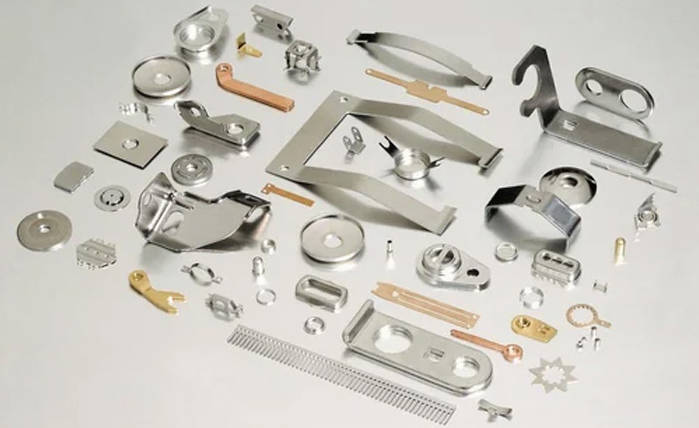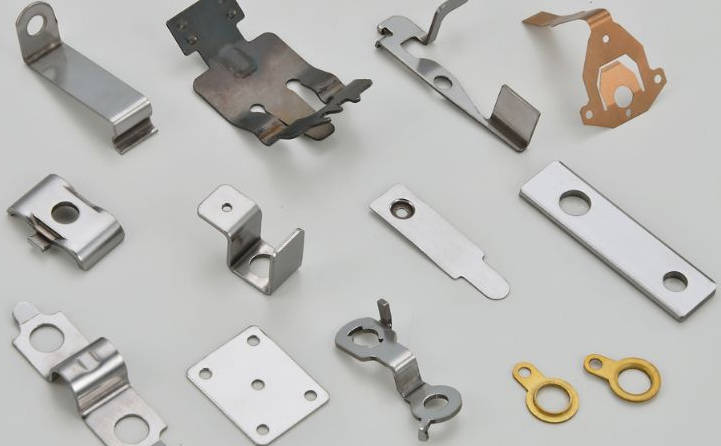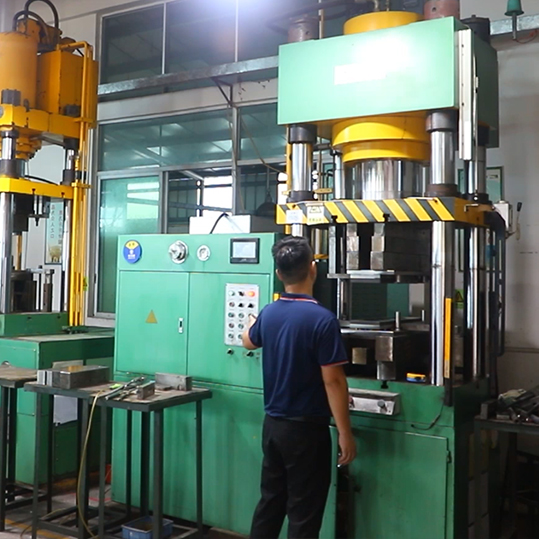Introduction
In today’s fast-paced manufacturing world, precision, speed, and cost-effectiveness are crucial. Kaiao-RPRT, a leader in Rapid Prototyping Services, is helping manufacturers tackle these challenges by providing innovative solutions that minimize the risk of design flaws during mass production. Rapid Prototyping (RP) allows designers to quickly create prototypes from digital models, test their functionality, and make necessary adjustments before committing to large-scale manufacturing. This proactive approach reduces costly errors, ensures product quality, and accelerates time-to-market.
As the need for high-quality and reliable products grows across industries, Kaiao-RPRT offers state-of-the-art Rapid Prototype Solutions tailored to meet the demands of manufacturers. In this article, we will explore how Rapid Prototyping for Manufacturing through Kaiao-RPRT helps reduce design flaws, enabling more efficient and effective product development. Whether you’re a startup or an established company, Kaiao-RPRT can help you bring your designs to life while mitigating risks and enhancing overall product quality.

1. What is Rapid Prototyping?
Before delving into how Rapid Prototyping for Manufacturing helps reduce design flaws, it is important to understand what Rapid Prototyping is. Rapid Prototyping refers to a collection of techniques used to quickly fabricate a physical model or prototype from a digital design file. It uses various methods such as 3D printing, CNC machining, and injection molding to produce a tangible version of a design.
The main advantage of RP is speed. Traditional prototyping methods can take weeks or even months to complete, but RP can produce a functional prototype in just a matter of hours or days. This rapid turnaround allows designers and engineers to evaluate and iterate their designs quickly, which is crucial for reducing the risk of flaws during the mass production phase.
2. Early Detection of Design Flaws
One of the key ways Rapid Prototype Solutions help reduce the risk of design flaws in mass production is through early detection. In traditional product development, errors or design flaws may not be discovered until the production stage, leading to costly delays, scrap materials, or even retooling of manufacturing processes.
With rapid prototyping, manufacturers can produce functional prototypes that closely resemble the final product. These prototypes can be tested and analyzed for functionality, performance, and fit before committing to the expensive and time-consuming process of mass production. By testing a prototype in real-world conditions, manufacturers can identify potential issues like structural weaknesses, ergonomics problems, or material incompatibilities early on, allowing for adjustments to be made before large-scale production begins.
3. Improved Design Iteration
Another significant benefit of Prototyping Services is the ability to iterate designs quickly. In traditional product development, the process of making design changes often requires new molds, tooling, or even full-scale rework, which can be expensive and time-consuming.
With Rapid Prototyping, changes can be made to the digital design, and a new prototype can be printed or manufactured in a short time. This iterative process allows manufacturers to refine the product’s design multiple times, ensuring that the final product meets all the required specifications. For example, if an engineer identifies a flaw in the prototype related to ergonomics, they can modify the design and test it again—something that would be difficult and costly with traditional methods.
This ability to test and modify designs quickly is particularly important in industries where product performance and user experience are critical, such as automotive, consumer electronics, and medical devices.
4. Reduced Cost and Time-to-Market
A major concern for manufacturers is cost, especially when it comes to developing prototypes. Traditional prototyping methods often require expensive molds, tooling, and a significant amount of time. Rapid Prototyping Services reduce both the time and cost associated with prototype development, which in turn lowers the risk of errors in mass production.
By producing a prototype in days rather than weeks or months, manufacturers can quickly identify design flaws and make corrections before investing in large-scale production. This reduction in prototyping time allows for faster decision-making and quicker iteration, which can significantly shorten the overall development timeline and bring products to market faster.
In addition, the cost savings from reducing the need for expensive traditional prototyping methods allow manufacturers to allocate resources more effectively, focusing on improving product design and innovation rather than dealing with costly design flaws in production.
5. Quality Control and Precision
Rapid Prototyping for Manufacturing not only reduces the risk of design flaws but also enhances the quality control process. With advanced RP technologies such as 3D printing and CNC machining, manufacturers can produce prototypes with a high level of precision and detail. This precision is critical when evaluating whether the final product will meet the necessary quality standards.
For example, in industries such as aerospace or medical devices, where small tolerances are crucial, RP provides the ability to produce prototypes with highly accurate dimensions. This precision ensures that designers can assess whether the product will function as intended and meet all regulatory and industry standards before mass production begins.
Furthermore, RP enables manufacturers to test various materials and finishes for the prototype, ensuring that the final product will perform under different environmental conditions and meet customer expectations.
6. Collaboration Between Design and Manufacturing Teams
The integration of Rapid Prototyping Services into the product development process also improves collaboration between design and manufacturing teams. Since prototypes can be created quickly and easily, designers and engineers can work closely together to resolve issues that arise during the prototyping stage. This closer collaboration reduces the likelihood of misunderstandings or errors that can lead to design flaws in the final product.
When design and manufacturing teams can collaborate effectively and evaluate prototypes together, it fosters a more efficient and effective development process. This open communication ensures that the product will be manufacturable at scale and that all potential issues are addressed before production begins.
7. Prototyping for Low-Volume Production Runs
In some cases, manufacturers may need to produce a limited number of products, either for testing, market research, or limited release. Rapid Prototyping for Manufacturing is ideal for low-volume production runs, as it allows for fast and cost-effective production without the need for large-scale tooling or expensive molds.
For example, if a company is launching a new product but is unsure of how the market will respond, they can use RP to produce a small batch of prototypes or products to gauge consumer interest before committing to full-scale production. This approach reduces the financial risk associated with mass production, especially for products that are still in the testing phase.
8. Final Thoughts: Reducing Risks with Rapid Prototyping
In conclusion, Rapid Prototyping Services offer a wide range of benefits that directly contribute to reducing the risk of design flaws in mass production. By enabling early detection of flaws, improving design iteration, reducing costs, and enhancing quality control, RP helps manufacturers avoid costly mistakes that could derail production schedules and affect product quality.
By integrating Rapid Prototype Solutions into the product development process, companies can ensure that their products meet the required specifications and perform as expected in the real world. Rapid Prototyping not only saves time and money but also helps companies bring high-quality products to market faster, with fewer risks and a greater chance of success.
For manufacturers looking to minimize risk and optimize their production processes, embracing the power of Rapid Prototyping is an essential step in the journey towards high-quality, cost-effective mass production.
9. How to Choose the Right Rapid Prototyping Service Provider
Choosing the right Prototyping Services provider is a critical step in ensuring that your product development process is successful. Not all prototyping companies offer the same level of quality, speed, and technological expertise. Here are some factors to consider when selecting a provider:
9.1. Expertise and Experience
Look for a provider with a strong track record in the industry. They should have experience in your specific field, whether it’s electronics, automotive, consumer goods, or medical devices. A seasoned provider will understand the unique challenges of your project and offer tailored solutions that suit your needs.
9.2. Technology and Equipment
Not all Rapid Prototyping for Manufacturing companies use the same technologies. Some may specialize in 3D printing, while others may use CNC machining or injection molding. Make sure the company uses advanced and appropriate technologies for your project’s requirements. For example, if your prototype requires intricate detailing and high precision, look for providers that specialize in high-resolution 3D printing or CNC machining.
9.3. Material Options
The material used in prototyping can significantly impact the performance of your prototype. Ensure that the provider offers a wide range of materials, including plastics, metals, and composites, and that they can match the material properties to the functional requirements of your product. A good provider will be able to advise you on the best materials for your prototype.
9.4. Turnaround Time and Flexibility
In the fast-paced world of product development, time is often critical. Look for a provider that offers fast turnaround times without sacrificing quality. Additionally, ensure that they are flexible and can accommodate changes or modifications to the design as needed.
9.5. Cost-Effectiveness
While you want high-quality prototypes, you also want to ensure that the cost aligns with your budget. Look for a provider that offers competitive pricing without cutting corners. The right balance between quality and cost is key to achieving a successful outcome.
10. Future Trends in Rapid Prototyping
As technology continues to evolve, so too does Rapid Prototyping for Manufacturing. Several emerging trends are shaping the future of RP, offering even more potential for reducing the risk of design flaws and improving overall production processes.
10.1. Advancements in 3D Printing Technology
3D printing is one of the most popular methods of rapid prototyping, and its capabilities are continuously expanding. New advancements in 3D printing technologies, such as multi-material printing and larger build volumes, allow for more complex prototypes that closely mimic the final product. These innovations will enable manufacturers to test more intricate designs and further reduce the likelihood of design flaws in mass production.
10.2. Integration of Artificial Intelligence (AI)
AI is increasingly being integrated into prototyping services to enhance design optimization. By using AI-driven tools, manufacturers can predict potential design flaws before physical prototyping, reducing the number of iterations required and streamlining the development process. AI can also help automate the selection of materials and processes, improving both speed and accuracy.
10.3. Improved Material Selection
As new materials become available, the variety of options for rapid prototyping is expanding. Materials that offer better performance, such as high-strength composites, thermoplastics, and bio-degradable polymers, are becoming more common. This allows for more accurate testing of prototypes under real-world conditions and further reduces the risk of design flaws.
10.4. On-Demand Prototyping Services
With the rise of on-demand manufacturing platforms, more companies are offering quick-turnaround prototyping services with minimal lead times. This is especially beneficial for companies with time-sensitive projects or those working with evolving designs. On-demand services offer flexibility, enabling businesses to get prototypes when they need them, which in turn accelerates the decision-making process.
Conclusion
In conclusion, leveraging Rapid Prototyping Services from trusted providers like Kaiao-RPRT can significantly reduce the risk of design flaws in mass production. With Kaiao-RPRT’s advanced prototyping solutions, manufacturers are able to test, refine, and perfect their designs before the production phase, ensuring higher quality products and lower production costs. The ability to iterate quickly, test various materials, and conduct real-world tests before mass production begins is a game changer for industries ranging from automotive to consumer electronics.
By integrating Rapid Prototyping for Manufacturing into your product development process, Kaiao-RPRT helps companies stay ahead of the competition while ensuring their designs meet the highest standards of functionality and performance. In a world where time-to-market and product quality are crucial, partnering with Kaiao-RPRT is a smart and strategic decision that can drive innovation, minimize production risks, and deliver superior results.
With the continuous advancements in RP technology, Kaiao-RPRT is at the forefront of shaping the future of manufacturing—helping you create better products, faster, with fewer risks.






